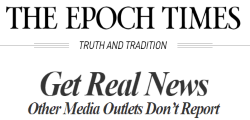We support our Publishers and Content Creators. You can view this story on their website by CLICKING HERE.
Documents reveal that Secret Service agents found the small Ziploc bag of cocaine in a White House ‘cellphone locker.’
The U.S. Secret Service released documents on May 6 regarding its investigation into the small bag of cocaine found in the White House in July 2023, revealing a lack of security cameras in the area where the drug was located.
The incident caused a full evacuation of the White House on July 2, 2023. After discovering the small bag in a “heavily traveled” area of the West Wing that is closed to the public but open to staff, media, and guests, officials dispatched a Hazmat team and local EMS.
The Secret Service closed its investigation on July 13, 2023, due to a “lack of physical evidence” with no suspects named. The agency said FBI analysis did not find fingerprints on the bag and that surveillance footage failed to develop any leads.
GOP lawmakers, including Rep. Tim Burchett (R-Tenn.), were not happy with the investigation and its lack of results.
Mr. Greenewald was not the only person to file a FOIA request for information. A Bloomberg reporter filed one on July 10, 2023, asking for documents pertaining to the investigation, including emails, text messages, photographs, and more.
Mr. Greenewald told The Epoch Times that he wasn’t sure why the government accepted his FOIA request while denying the other two, although he explained that the way filers word FOIA requests often affects their outcome.
While the government explained that The Heritage Foundation asked for documents not subject to the FOIA, the Bloomberg reporter made his request before the Secret Service finished its investigation. Mr. Greenewald waited to file his FOIA until a day after the investigation closed, which could have influenced its success.
Regarding the documents, Mr. Greenewald said he did not find “one piece more revelatory than the next” but that they offer a “rare glimpse into the inner workings of the Secret Service and their protocols in handling potential security threats at the White House.”
The first batch, released in November 2023, includes 116 pages of case management reports, chain of custody paperwork, and redacted emails.
In one email, an unnamed official says the “small Ziploc bag” was found in a cellphone locker and that the Uniformed Division provided testing for radiation, thermal changes, or any “off-gassing” inside.
In another email, an unnamed official says the bag was tested for DNA and fingerprints by July 10, 2023, but those tests were “inconclusive.”
The second batch, released on May 6, contains 25 pages of reports and redacted emails that the government initially withheld in November 2023.
One report explains why video footage failed to locate the perpetrator.
“The JOC [Joint Operations Center] reviewed the available video feeds on West Executive Avenue of passholders and guests entering and exiting, however were unable to determine a time or who placed the baggie in the phone box since there’s no direct camera feeds inside the [REDACTED],” the unnamed official said.
While it’s not exactly clear what location in the White House the report redacted, it’s possible the official was referring to the West Wing, which officials later confirmed as the location of the cocaine.
Tom Ozimek and Naveen Anthrappully contributed to this report.

 Conservative
Conservative  Search
Search Trending
Trending Current News
Current News 







